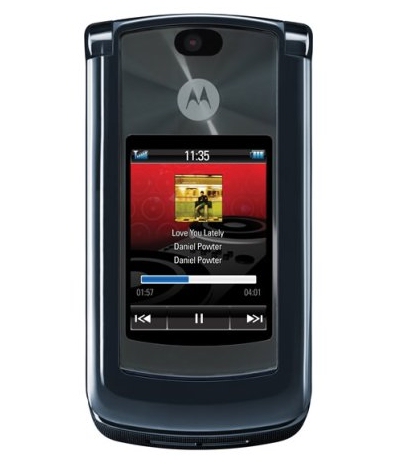
A wise man once commented that you should never change a winning formula. When he uttered these wise words there's every chance that someone from Motorola overheard him, because the company has clearly taken this piece of advice into account when designing the successor to its amazingly popular RAZR V3 mobile phone.
It's hard to believe that the original V3 is now well over three years old. In that space of time many handsets have come and gone, but you can still walk into your local mobile phone emporium and purchase a RAZR, despite the fact that the technology contained within this design classic has long since been superseded. The simple fact is that the RAZR V3 struck a cord with mobile phone users – gorgeous looks coupled with the wafer-thin size and reassuringly expensive metal casing helped create a feeling of almost sinful opulence. Here was a phone that screamed class and sophistication.
The intervening years have sadly seen the RAZR lineage sullied a little by Motorola's overzealous marketing. We've had all manner of 'improved versions' but none have managed to replicate that same 'wow' factor the original possessed – until now.
First impressions of the RAZR2 V8 are somewhat muted. On first inspection it doesn't actually look or feel that much different to the V3; it's only when you crack out the measuring tape that the physical changes become a little more apparent. This new addition to the RAZR line is ever so slightly thinner than the original V3, but is also a little taller.
The other big cosmetic change is the massive external screen, which is bigger than the main displays seen on many rival handsets. Opening the phone reveals the familiar RAZR keypad layout and a pin-sharp 2.2-inch QVGA screen.
Motorola isn't a company famed for producing intuitive, user-friendly interfaces so it's a pleasant surprise to see massive advancements have been made in this area. The menu system is a breeze to use and it would appear Motorola has been taking some tips from Sony Ericsson in this regard.
The more you play with the phone, the more you being to appreciate the subtle but significant improvements. The external screen can be used to read text messages without opening the handset (useful if you're somewhere where you'd rather not flagrantly display your phone – or, of course, if you're spectacularly lazy) and also showcases touch-sensitive controls that come in very useful when listening to music.
Hidden within the menu system are myriad neat little features, including the ability to upload videos directly to your online blog, a surprisingly robust voice command system and – most amusingly – a 'talking phone' option. Switching this on results in the each menu option, text message and contact list item being recited by what sounds like an upper class English gent. It's easy to pass this off as a gimmick but it could be genuinely helpful for people with sight impairments, and it would be nice to see this avenue explored a bit more effectively in the future.
Sadly, the one area where the V8 doesn't really make any advancement over its predecessor is gaming. While the power Linux-based operating system should allow for some truly amazing games, the phone disappointingly retains the extremely flat D-pad of the original RAZR. Although it's perfectly acceptable for general menu navigation, it's not really suitable for interactive entertainment on the move. The lack of travel when you press a direction on the pad means it's too easy to double-press by mistake.
We pride ourselves as being hardcore mobile phone gamers here at Pocket Gamer, so we're quite disappointed by the tame gaming credentials this new RAZR possesses. With other leading manufactures seemingly waking up to the potential profits a fully realised gaming phone can bring (see Nokia's recent N-Gage-enabled range) it seems almost inexcusable that any leading handset such as this should treat interactive entertainment as such an afterthought.
Other niggles are present, too. While the phone comes in two memory flavours – one with 512MB of on-board memory and the other with a whopping 2GB – there's no option to expand that storage with additional cards. We can only assume the lack of a card slot helps keep the phone slim, but these days even the most slender of handsets seem to feature expandable memory of some description. The two-megapixel camera is also something of a disappointment, especially when you consider other handsets in this price range boast far superior resolutions.
Regardless of these issues, the RAZR2 V8 remains a worthy successor to the aging V3. Motorola has overhauled the problematic menu system and introduced some really classy features. Although it's lacking in some key areas it's still a wonderful phone that we wouldn't be surprised to see achieve the same success as its predecessor. But here we mainly judge our phones on their gaming ability, and on that basis the RAZR2 can't match many of its rivals.
Motorola RAZR2 V8

